posts in which i say HOWEVA
Basketball: really as good as all that?
Via UMHoops
Now, it doesn't matter for the Big Ten regular season...it is what it is, we went 13-5, and earned a share of the title. But what does it mean for the Big Ten Tournament and the NCAA?
Ask yourself this question when it comes to evaluating the Michigan season...was it a solid 13-5 or a weak 13-5? Was it a 13-5 that with a few breaks was 15-3? Or was it a 13-5 with a bunch of breaks that could have easily been 10-8? Which of those is more representative of the basketball we saw this year? Death from above in the two tournaments?
Northwestern looms. Twice we played them. Twice we went overtime with them. Could have lost both. Didn't. Positives to be sure. But who shows up come Friday? …
To me, happy we share the title. Not convinced at this point we are as good as either of those other two teams. Proud of the heart, proud of the overall result. Concerned about the two tourneys.
Bluntly, Michigan was not as good as either of the two teams they tied with. You can see that in the efficiency margins:
W-L Pace PPP Opp. PPP EM
1. Ohio St. 13-5 65.4 1.10 0.93 +0.17
2. Michigan St. 13-5 62.5 1.08 0.92 +0.16
3. Wisconsin 12-6 58.0 1.03 0.97 +0.06
4. Michigan 13-5 58.9 1.06 1.01 +0.05
5. Indiana 11-7 65.4 1.11 1.06 +0.05
6. Purdue 10-8 64.0 1.10 1.09 +0.01
7. Northwestern 8-10 61.0 1.08 1.12 -0.04
8. Minnesota 6-12 62.6 1.00 1.04 -0.04
9. Iowa 8-10 65.8 1.03 1.09 -0.06
10. Illinois 6-12 63.7 0.97 1.05 -0.08
11. Penn St. 4-14 62.3 0.97 1.10 -0.13
12. Nebraska 4-14 61.9 0.93 1.09 -0.16
Kenpom will confirm that for you: it has MSU and OSU #2 and #3 behind Kentucky with Michigan idling at 20.
Meanwhile, going 13-5 would not have netted Michigan a title in any other year since the Big Ten went back to 18 games. Most years they wouldn't even be within a game. There's no denying they were fortunate to end up where they are now. Michigan lost one close Big Ten game (@ Indiana, 73-71) and won four to six (NW x 2, MSU, Purdue, maybe Minnesota and OSU depending on how you feel about five-point games). You can grub grub grub about will to win and finding ways to win and winning is for winners; I don't buy that stuff.
In terms of efficiency margin and Kenpom rankings, Michigan is about where we'd hoped they'd be before the season: slightly improved despite the loss of Darius Morris, short of truly contending for a conference title. In terms of wins they're a three seed and a Big Ten champ.
I don't say this to bring anyone down. It's wonderful. For this team to accomplish what they have is fantastic, and at this point anything after winning a 3-14 matchup in the first round is gravy.
I do think they'll be a particularly vulnerable three, though, and won't be surprised to see them flame out in the second round*. I also won't let that damage the wonderful run they went on to erase a lot of bad streaks. From a logical perspective I get the "concern"; from an emotional perspective it went from 90% house money to 110% as soon as Buford hit that shot. The worst that happens is Michigan State fans say "see you weren't really a Big Ten champ." This will not prevent the banner from going up.
---------------
*[I'm not predicting that by any means. Michigan gave Duke all they wanted last year and a hypothetical second-round opponent will be much worse than the Blue Devils were last year. Beilein is a consistent outperformer when he reaches the tourney.
HOWEVA, I do loathe the prospect of drawing a couple of the current six-seeds in Jerry Palm's bracket. They are all dangerous mid-majors: UNLV, New Mexico, Wichita State, and St. Mary's. In Kenpom's eyes that's two teams better than Michigan (Wichita, New Mexico) and two who are a dozen or so spots worse (UNLV, St. Mary's).
You may remember the Dohrmann UCLA article mentioning the success of a couple transfers out of the program: that's basically UNLV. Chace Stanback is a 6'8" guy hitting 47% from three; Mike Moser is a 6'8" guy in the top ten in defensive rebounding with high usage and an inside-out game.
I find Palm's fives a lot more palatable: Louisville (#30 Kenpom), FSU (#28), SDSU (#51), and Creighton(#35). No matter what I expect a second-round nailbiter.]
The golden child's effect on the OL.
Brian or Ace or Anybody;
I am confused, when talking about o-line prospects in the 2012 or 2013 class, some say "Fox makes an ideal RT" or "LT-T is the prototype Left Tackle.". Is the fact that Shane "Obama circa 2008" Morris is a southpaw baked into the projections as to who plays where on the OL? Wouldn't the proto LT be moved to RT for a lefty QB, or no?
Are you and your Bloggy ilk keeping this in mind, does it make a difference for a lefty qb?
Reid McCarthy
I don't think it matters much. Many players at Michigan and elsewhere have flipped from right to left tackle without a problem; when Morris becomes the starter Michigan will put their best pass protector at right tackle and he'll adjust over the course of an offseason. Jake Long switched from right to left after his first year as a starter; Mike Schofield was pressed into service as a left guard after practicing mostly at tackle and did fine.
There might be some slight issues if Morris is either in (because of Gardner injury) or out (because of a Morris injury) of the lineup unexpectedly. In that case you probably wouldn't want to screw up the line's performance by flipping them mid-game and will be exposing either Morris's or his backup's blind side to slightly worse protection. That's life.
Even if that happens it doesn't look like there's going to be a huge difference between the starting tackles at any point in the near future. Whoever the #2 guy is will have beaten out an array of 6'5"-6'7" blue chips. This is not going to be Jake Long opposite Rueben Riley. It's going to be Almost Jake Long opposite Decent Approximation Of Jake Long.
MANBALL concerns revisited.
I WANT YOU TO JOIN UP
ALL OF YOU
THAT WAS EASIER THAN I THOUGHT IT WOULD BE
Brian,
You have argued over the past several years that you think Michigan will be at a talent disadvantage compared to teams like Ohio and SEC oversigners like Alabama, so long as the status quo persists. You've also argued that, schematically, the best way to deal with this deficit is the spread offense. I am curious if you think Hoke (and Borges) can build an offense in their mold that can truly compete on the national stage. What do you think it will take in terms of recruiting and scheme to be a legitimate contender for the national championship? Do you think that we have the ability to recruit the offensive talent we need to contend for a national title? Or is it perhaps too early to tell?
Obviously an elite defense, which I think we are building, mitigates the need for an elite offense, but recent BCS title games have demonstrated that you can't rely on just defense to win that game. Ultimately I am asking what combination of scheme and talent you think we need to achieve in order to win the national championship.
All the best,
Michael
My concerns about Michigan's ceiling have been blown away by Hoke's early recruiting returns. If Michigan is bringing in top five classes consistently—Hoke's already two for two a month into his second class—and is approaching games with the controlled aggression that Hoke, Mattison, and Borges displayed in their first year, there is no reason they can't run a conventional offense and compete for national titles.
When you have a huge talent advantage or are Wisconsin you can line up and beat heads in: top ten FEI offenses* this year include Wisconsin, Stanford, and USC. Alabama was #11. All you need to replicate that is a ton of NFL guys on the line, an NFL quarterback, and some NFL skill guys. Check, check, well… we'll see.
I get the vibe from your email that you're a bit skeptical of Michigan's skill position recruiting. I think that's premature. Shane Morris is a Henne-level QB recruit. Michigan did pick up a consensus four-star in Amara Darboh at WR and came close to flipping Brionte Dunn; this year they've got a top 100 tight end (for now, anyway—Butt will probably fall into the 100-200 range as the year progresses) and seem to lead for a couple five-star types in Ty Isaac and LaQuon Treadwell. If Hoke lands those guys Michigan's weak spot in the 2012 and 2013 classes is…
[PROCESSING]
[STILL PROCESSING]
…uh… cornerback? For now, anyway.
Even if one of those two guys escapes we're still 11 months from Signing Day; more targets will emerge. It seems like Michigan's going to be able to focus a lot of attention on any holes they have in the class come, oh, May.
My main concern with Michigan's scheme going forward is a potential over-reliance on a fullback. It seems like most pro-styles have moved to double TE sets. See this Chris Brown article on Alabama's very MANBALL, very NC-worthy offense. I hope that's where Michigan's going, too. Tight ends threaten defenses vertically in a way that fullbacks do not; they're better athletes, generally, and better targets for downfield passes. Fullbacks… eh.
I think this is also where Michigan's going. Their TE recruiting is massive—they're looking for a fifth in two years—and there's clear distinction between guys like Jake Butt and Khalid Hill, a 6'2", 230 pound guy designated a "U-back" or "move tight end" according to TomVH.
So, like, whatever. My beefs 14 months into the Hoke era are "that one punt against Illinois" and "taking a scholarship fullback." Oh, and the complete implosion of the offense in a couple games. But that's not a long term issue.
Hoke has dumped game-changer after game-changer on us since his hire to the point where the internet is making memes like this…
Ben Gedeon's visiting, you say?
…if we're feeling for a ceiling it's a bit hard to find right now. One will probably come, but there's no reason to go looking for it just yet.
--------------------------
*[I know FEI put up some weird results this year what with Navy and Miami in the top ten as well but it at least tries to account for strength of schedule and pace of play; FWIW, Stanford was 8th in total yardage, Wisconsin 14th, USC 21st, 'Bama 31st.
Also, as long as you're down here, how about Paul Chryst? I predict Wisconsin has a noticeable dropoff in his absence.]
no pressure, Ondre
As part of the run up to the Super Bowl, Smart Football posted a Grantland article detailing the Patriots' defense. It's not much good at football, that defense, but it is pretty interesting from the Michigan perspective for two reasons.
Reason one: it provides an excuse for Chris Brown to talk about techniques in an easy to understand way.
"Gap" refers to the area between offensive linemen. A 1-gap technique is just what it sounds like: The defensive lineman lines up in front of the gap he is responsible for and his job is to attack and control it. If nothing else, a defender must not allow a runner to go through his gap. While defensive linemen attack their gaps, the linebackers behind them are responsible for their own gaps. These are the defense's "run fits," meaning how they fit into an offense's blocking scheme to take away running space.
Courtesy of Chris BrownThe 2-gap technique, by contrast, sounds physically impossible. How can one player occupy two separate gaps? He does it by controlling the blocker. At the snap of the football, a two-gapping defensive lineman does what Wilfork did to Birk. He leads with his hands, gets leverage on the offensive lineman, and takes control of the blocker. From there, the advanced techniques kick in. On run plays, the defender reacts to where the blocker tries to take him. If he is double-teamed, he'll try to split the blockers and either shoot into the backfield or occupy the blockers, thus freeing up his teammates to make tackles.
In short, while a 1-gap player attacks gaps, a 2-gap player attacks people. Football's conventional wisdom states that an effective 2-gap lineman, particularly one who lines up in the middle of the defense like Wilfork does, must be enormous. Coaches refer to them as "war daddies." But size is actually less important than athleticism and smarts. The line between touchdowns and stops in the NFL is exceedingly thin, and it's footwork and feel that are the difference. It is the most violent, most complicated, and most beautiful ballet I can think of.
Count the war daddies on the Michigan defensive line. You come back with a true freshman and an inconsistent former five star who can't play consistently without standing up straight. The other guy who would be two-gapping in a 3-4 is… Nate Brink? Jibreel Black? A true freshman? Not happening.
This matters much more than a surfeit of linebackers when you're trying to pick a defense to run, especially when moving to a two-gap system does not get more of them on the field. The 3-4 is not coming to Michigan.
At least not in total. We might see bits and pieces, though…
Reason two is an interesting adjustment the Patriots have made to adapt to their personnel. Wilfork is a monster they would like to use to the maximum extent possible, which means two-gapping him. Asking him to be Mike Martin is a lot like asking Ondre Pipkins to run a bunch of goofy pass-rush stunts like he did in the AA game. But because of deficiencies elsewhere Bill Belichick (mainly a 3-4 guy) feels compelled to run a 4-3, which generally means one-gapping.
What to do?
The Patriots run a 3-4 to one side of the field and a 4-3 to the other, all on the same play. The key to all this is Wilfork. He lines up over the center and assumes his traditional spot of run-stuffing, blocker consuming, two-gapping war daddy. Belichick fills out the rest of the pieces based on the strengths and weaknesses of his other defenders.
Create a hybrid. This is the Patriots' under front, one similar to what Michigan ran this year except with one planetoid defensive tackle and one strong-and-good strongside defensive two-gapping. This might be something we see from Michigan next year. Getting maximum production out of Pipkins basically demands something similar.
The problem here is still the same one we have when we theorize about moving to a 3-4, though: there is no SDE on the roster with a prayer of being able to two-gap anything. If you try to get clever by flipping Campbell out there you're asking for it when that tight end goes in motion to the other side of the line and you're either rearranging the entire DL on the fly or running this:
Your weakside DE is not a pass rush threat at all. So don't expect this next year.
HOWEVA, even if you shouldn't go around calling the defense "basically Belichick's" yet, we should expect Pipkins' deployment to be radically different than Martin's. That should mean fewer blocks getting to the linebackers and more plays from that unit. If the ILBs find a surge in productivity it will be because of Pipkins—not because he is a better player than Martin, but because he's a different one.
You'll be able to tell if this is happening by Pipkins's alignment. Martin played a "shade"—he aligned in the gap between the center and guard. If Michigan wants Pipkins to be Wilfork they'll put him nose to nose with the center and say "sic 'em."
-------------------------------
This is where disclaimers go. Even with New England doing this a major theme of the first half in the Super Bowl was that one-gap backside tackle getting doubled (often on zone runs) and blown up. It is never as simple as "this guy gets one on one blocking." All you can do is change the equation so that doing that exposes someone else to a tough assignment. You can't entirely cover up for a sucky player.
Pipkins may be talented but there's more to playing nose tackle than talent. You can dominate your guy, push him into the backfield, and still screw up if you lose control of one of your gaps. Usually this happens when the DT gets pushed too far in the direction he wants to go and opens up a cutback lane behind him. When one of these players is Gabe Watson and the other is Pat Massey, pain results. It's not too hard to envision that happening what with Will Campbell still a rotation player you're a little afraid of. At least he's not 6'8"*.
It may make more sense to start Pipkins off with the easier assignment (always one-gap) and hope to make him impactful in two gaps later in his career. That'll be one of the interesting tactical decisions we unveil against… oh, Christ. Alabama. Yay!
*[Who in the hell looked at a 6'8", 260 pound player and put him on defense? That is either a tackle or a tight end or a man who should be playing basketball.]
Complaining about the lack of bubble screens in Michigan's offense has become a hobby-horse here. Some people find this weird. I admit that a focus on one particular play, no matter what it is, is often missing the forest for a tree, and my focus on a play that picks up eight yards if run well is a little maniacal. But I see a lot of things not work and think 1) the bubble is open and 2) that might have worked if the bubble wasn't open.
While the bubble seems like an option you can take or leave, it's actually a key way to make every player on the offense an effective blocker every play. When Magee goes to his cutups in those videos about the spread 'n' shred philosophy, the guy asking most of the questions* wants to see bubbles first.
*[who I think is Harvard's coach since he talks about playing Columbia and a pizza place on "Comm Ave" that Google reveals is in Boston.]
The bubble is a constraint that opens up other things and forces the defense into positions it would rather not take. Michigan saw this first hand, as a series of first half bubbles forced Jake Ryan into the slot against Northwestern. Even that wasn't enough to hold down the single bubble the Wildcats ran in the second half before fumbles and interceptions and Michigan scoring on every drive terminated Northwestern's ability to use them.
It's not just a play. It's part of a coherent whole. Spreading the field stresses the defense only if you make the D cover everyone horizontally. Smart Football explained a long Oregon touchdown in the recent Stanford game and I was struck by the difference between the way Stanford defends this play…
…and the way Illinois defended a similarly unbalanced formation from Michigan:
That is a similar setup with one extra guy in the backfield. The highlighted defender to the top of the screen is the equivalent of #3 at the top of the Stanford defense (not the guy on the line)… unless the highlighted guy at the bottom—the corner—is. Someone on this defense is not respecting the threat of Junior Hemingway.
Michigan will run the play I've been calling "inverted veer", which is probably not the best terminology since various people say people call it "dash" and since it features a guy pulling to the frontside of the play it's not really a "veer"—if you care about these things. It's too late for me since I've got a tag, but you can still save yourself.
Anyway, on the snap, before the mesh point, it is clear that both highlighted defenders are going to get involved in the run defense.
Where is the equivalent guy in the Stanford play?
His feet are the ones bugging out for the bubble at the top of the screen. This effectively blocks a defender without having to engage that receiver's potentially crap blocking skills.
Junior Hemingway's existence, in contrast, is pointlessly lonely:
There isn't anyone within five yards of him by the time the mesh point passes. Even before the mesh it's clear the bubble is going to be open, if it was being run.
Anyway, at the mesh point the containing DE is containing so Denard pulls.
This options off a DE; the slot guy is being taken by Hopkins; the playside LB will get kicked by the pulling Omameh. There is no one for the corner, and this has turned into a run up the middle.
This is pretty much dead at this point. Michigan's got some problems on the line, too: you can see that the Lewan/Schofield combo block hasn't even sealed the playside DT, let alone the WLB… but that's just another reason the play isn't going to work since Denard is tackled in the backfield by that backside CB:
Pile of bodies, no gain, third down.
Video
Items of Interest
This isn't to say I think Borges did a bad job in this game. I did get a little frustrated by the forays into the I that were spectacularly unsuccessful—before the Toussaint runs in garbage time Michigan had run seven times out of the I for –1 yards—and the lack of responses to the increasingly aggressive Illinois defense. HOWEVA, in context the move was to go conservative and get out of Dodge; before that was the move he tore up a good defense and was thwarted largely by things out of his control.
There are multiple issues with this play and I'm not suggesting the bubble is a panacea. I am saying it is going to work for tons of yards here, but it's not the only reason this play gets thumped.
The threat of the bubble effectively options off another defender. This means more space for people who are good in space, one more opportunity to blow something for the defense, and mitigates the following.
Receivers' blocking eh… not so good. On the play where Denard fumbled he actually had a good setup for the pull: the backside DE has shuffled down the line and Koger went around him to the edge.
Unfortunately, Junior Hemingway's consistently crap blocking reared its head on this play and the slot LB—who is actually covering the WR on this play—created problems.
Denard has to cut back. If Michigan's running a bubble this guy is either outside of the hash or Denard's throwing it to Hemingway or the Illinois defense is getting super aggressive and opening itself up to a Worst Waldo play. Since he's just a wide receiver who can't block Denard loses an opportunity to burst into a ton of space.
Lack of bubbles = lack of big plays (that aren't chuck and hope)? If you're looking for a culprit when it comes to the lack of long plays that are very open, the lack of the humble bubble screen is a candidate. When you spread the field and make the defense defend all eleven players on every play, a single breakdown means big yards. If you're covering every WR man to man and trying to leave two deep safeties, this is the result:
Michigan has put a lot less stress on safeties this year because they run a bunch of plays from a formation in which opponent safeties think "if they run it will be for half a yard" and when they're in the shotgun they aren't really in the spread, if you catch my drift. By not attacking the outside consistently Michigan lets opponents defend them with two deep.
In the inverted veer above the guy on Hemingway starts 13 yards off the LOS, which means the free safety can come down on the run without worrying about an Oh Noes.
Also bubbles work, yo. I mean, sure, opponents freaked out about them in the RR era since they were a foundational component of the offense but when they were run they worked, and when opponents run them against Michigan (or State vs Iowa) they pick up chunks. When you can get a chunk on first down you have a low-pressure environment to probe with your run game.
This is clearly a philosophical thing that is permanent. I'll drop it now, and this is not a criticism of Al Borges's overall philosophy—we have no idea what that's going to be like. It's clear, however, that the vast bulk of teams who use the quarterback as a runner believe the bubble is an integral part of the effectiveness of the offense. Michigan doesn't, and unless Borges can explain that in a way better than "don't ask me about it" its absence will rankle.
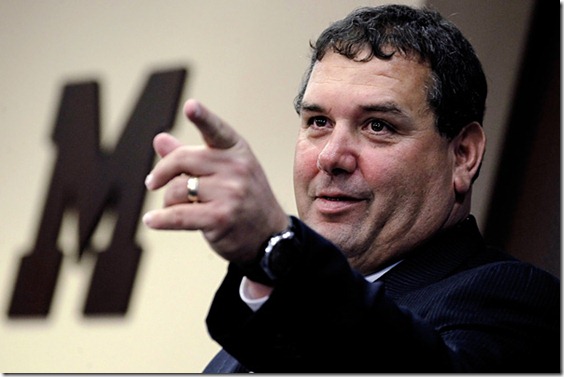

![073111_Wilfork[1] 073111_Wilfork[1]](https://mgoblog.com/sites/mgoblog.com/files/images/More-On-Next-Years-Front_20AB/073111_Wilfork1_thumb.jpg)
![08d936fb70f4fdedeb89bc2451ef9e6e4[1] 08d936fb70f4fdedeb89bc2451ef9e6e4[1]](https://mgoblog.com/sites/mgoblog.com/files/images/More-On-Next-Years-Front_20AB/08d936fb70f4fdedeb89bc2451ef9e6e41_thumb.jpg)
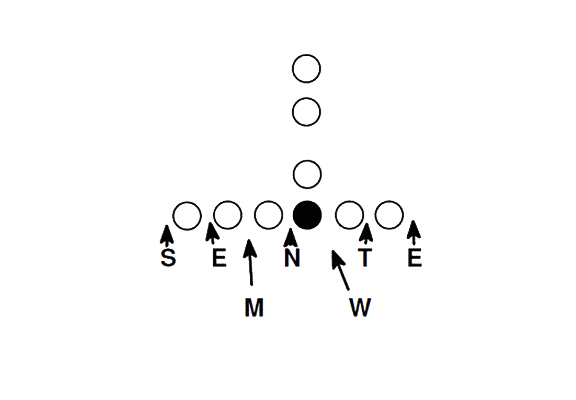
![grant_diag1_sy_576[1] grant_diag1_sy_576[1]](https://mgoblog.com/sites/mgoblog.com/files/images/More-On-Next-Years-Front_20AB/grant_diag1_sy_5761_thumb.jpg)
![grant_diag2_sy_576[1] grant_diag2_sy_576[1]](https://mgoblog.com/sites/mgoblog.com/files/images/More-On-Next-Years-Front_20AB/grant_diag2_sy_5761_thumb.jpg)
![grantland_e_Oregon-101jr_576[1] grantland_e_Oregon-101jr_576[1]](https://mgoblog.com/sites/mgoblog.com/files/grantland_e_Oregon-101jr_5761_thumb.jpg)
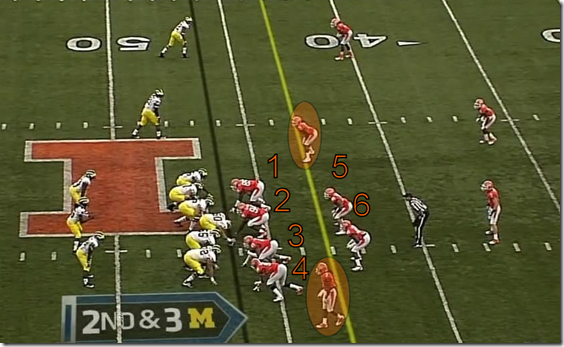
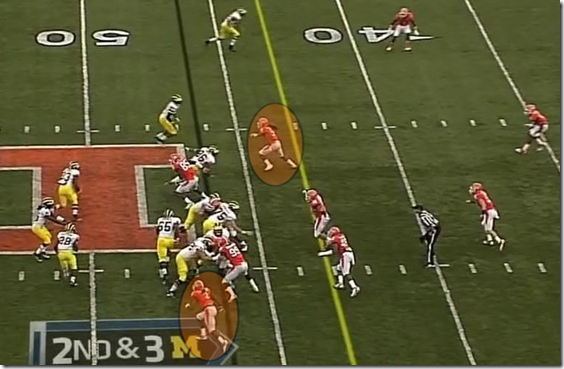
![grantland_e_Oregon-201jr_576[1] grantland_e_Oregon-201jr_576[1]](https://mgoblog.com/sites/mgoblog.com/files/grantland_e_Oregon-201jr_5761_thumb.jpg)
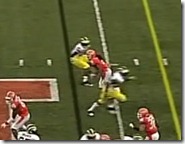
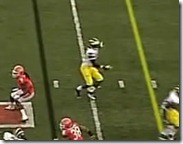
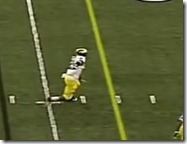

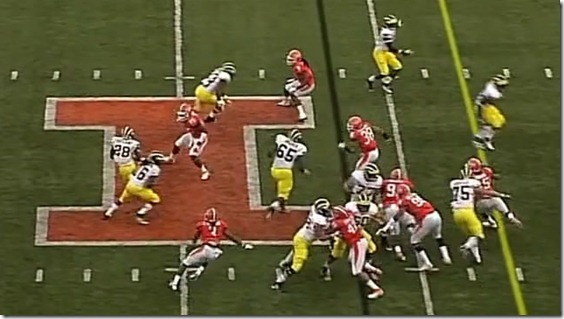
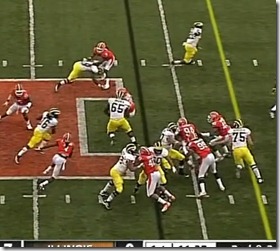

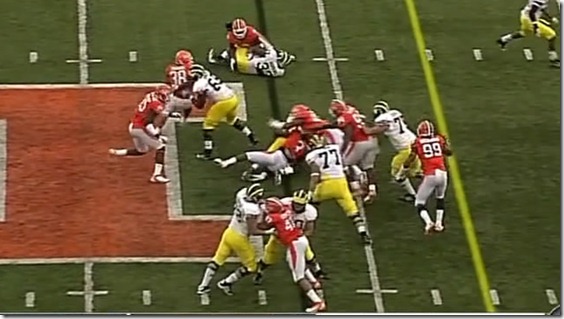
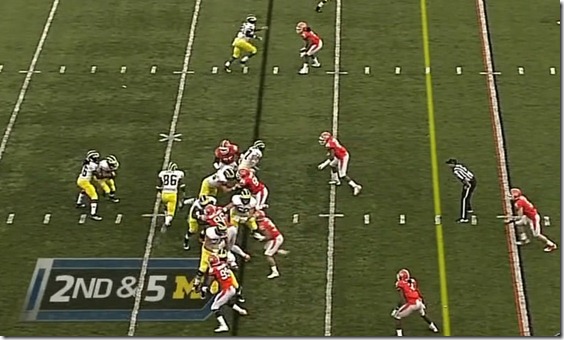
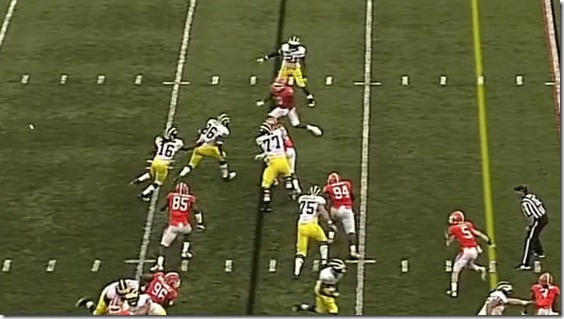
![6346037042_7a30917b96[1] 6346037042_7a30917b96[1]](https://mgoblog.com/sites/mgoblog.com/files/6346037042_7a30917b961_thumb.jpg)
![6345287519_2492ff5405[1] 6345287519_2492ff5405[1]](https://mgoblog.com/sites/mgoblog.com/files/6345287519_2492ff54051_thumb.jpg)
70